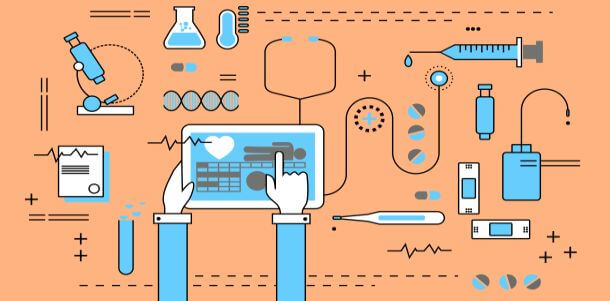Big Data and the Healthcare Industry

When it comes to healthcare costs, they come under review for accuracy but still contain errors. There’s also issues with incorrect pricing, the wrong line items on a bill that don’t relate to the medical treatment undertaken, and outright fraud too.
Healthcare Billing is Usually Incorrect
Healthcare bills are usually incorrect. What do we mean by usually? According to some reports, as many as 80 percent of bills from healthcare providers like hospitals, outpatient clinics, and other facilities are factually incorrect.
This would be rather shocking if it wasn’t so worrying, considering how expensive most healthcare bills are in the first place.
Bills must be created correctly using strict coding practices to make them understandable. When bills are being paid by insurance companies, they look through them carefully for any errors and commonly send them back for correction and re-billing later. However, even then, mistakes and other issues slip through because of a lack of using big data to crunch the numbers and look for irregularities.
Big Data to the Rescue
One of the ways that big data is being used is looking at medical billing to improve its accuracy.
Healthcare groups, independent companies, insurers looking for an outside review of their claims review policies, and other concerns find that an expert is useful to protect their interests. Such groups use big data to collect volumes of claim information to crunch the numbers on them.
What an expert like Financial Recovery Group aims to do is find what looks normal and what looks out of place or plain wrong.
For instance, when a broken finger usually costs within a certain range in that state, receiving a bill that’s overly costly can get picked up as one for serious review. Similarly, big data analysis can also find when a certain healthcare provider has bills that regularly fall outside the norm. At that point, the billing for their whole organization can be reviewed for accuracy, fraud, and any valid reasons why they consistently charge more. On the topic of using technology to improve business accuracy and efficiency, you could hire a medical virtual assistant to streamline administrative tasks, enhance patient communication, and optimize workflow efficiency in healthcare settings. VMeDx expert Virtual Medical Assistants can handle all your paperwork, allowing you to focus on providing top-notch patient care.
Miscellaneous Charges and Unrelated Procedures
Other areas where big data can be used to isolate strange financial practices is when there’s unexplained miscellaneous charges or unrelated procedures on a billing.
With miscellaneous charges, these may have correct coding, but they lack enough specificity to verify their authenticity. It’s easy for a hospital to pad extra costs to bills on a regular basis and they don’t get picked up because they’re small and seem minor. However, over thousands of bills, they still add up. While a human might not spot that pattern, a machine can.
Similarly, once data analysis is smart enough to understand how one procedure relates to another, they can also appreciate when they’re unrelated too. Or, at the very least, should be reviewed for relevance. For instance, someone falling down a set of stairs might break a rib but is unlikely to need their appendix removed due to the accident. Understanding commonalities helps to isolate discrepancies where items were applied to the wrong patient’s bill.
Big data is having a huge impact behind the scenes across many industries. It’s a fascinating area that’s only set to grow as companies find new ways to use it for their benefit and that of their customers.

























